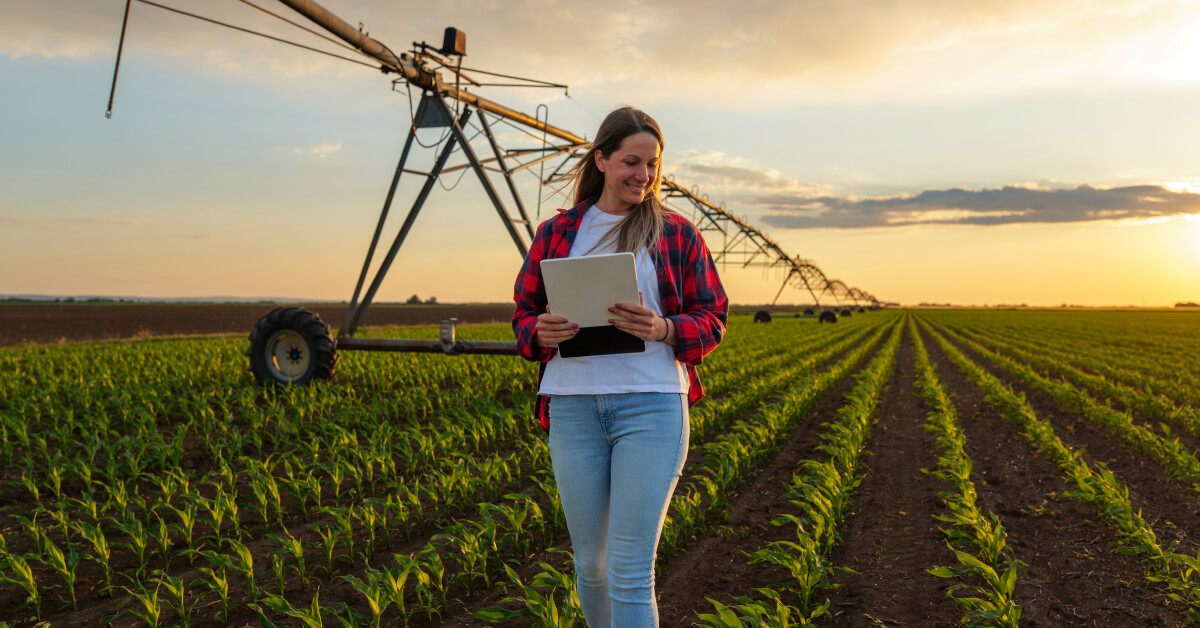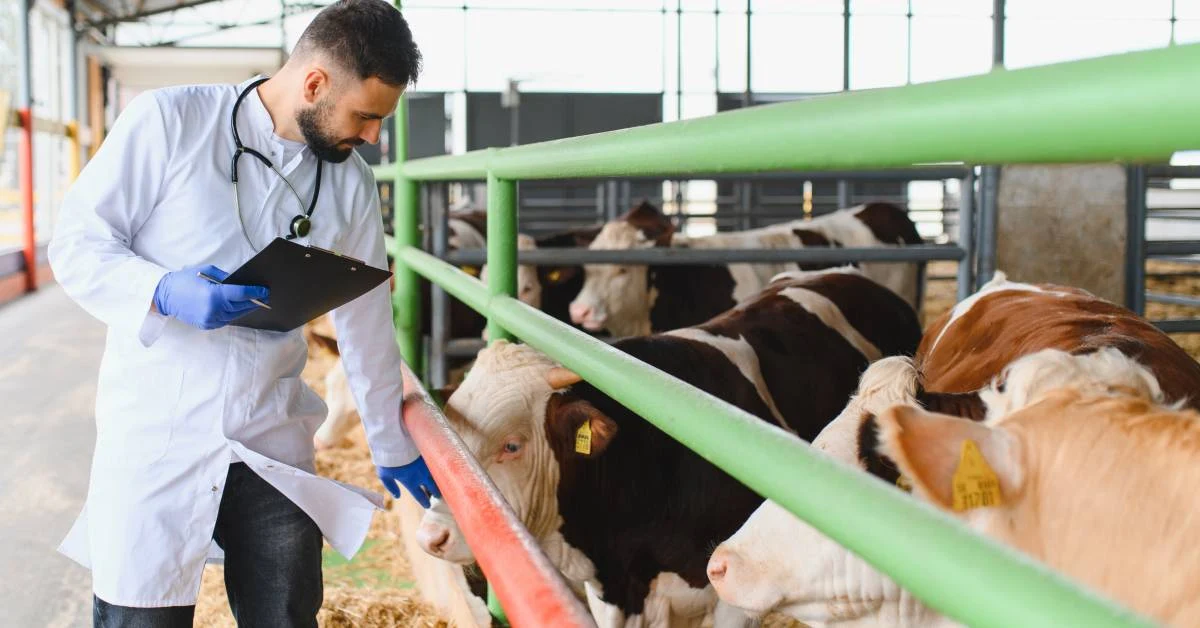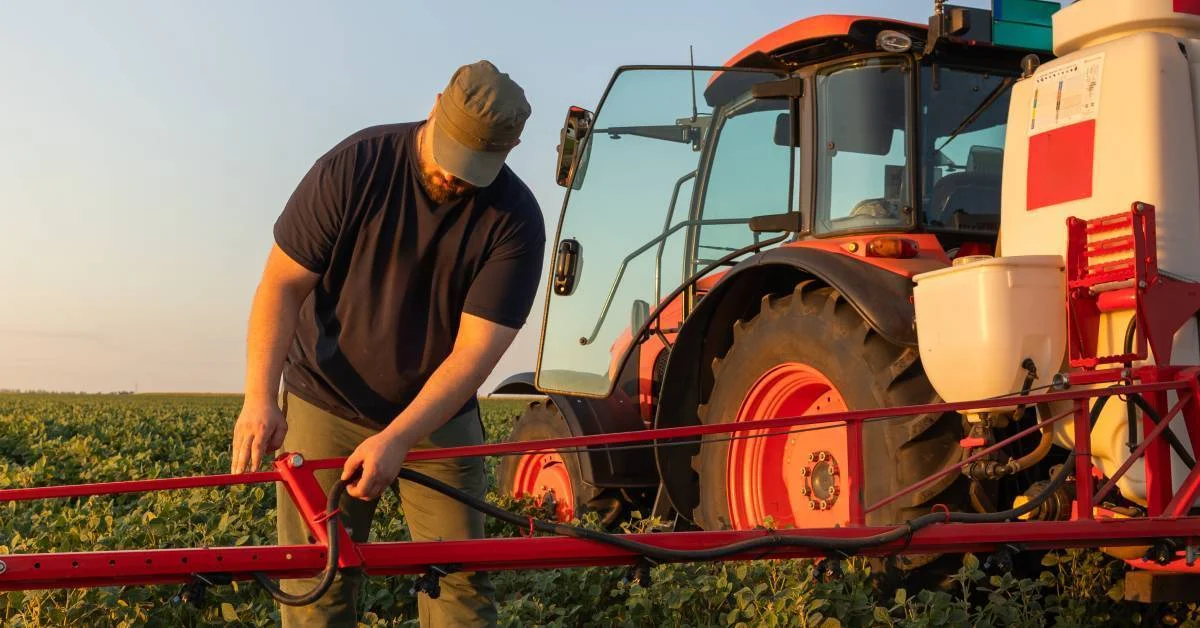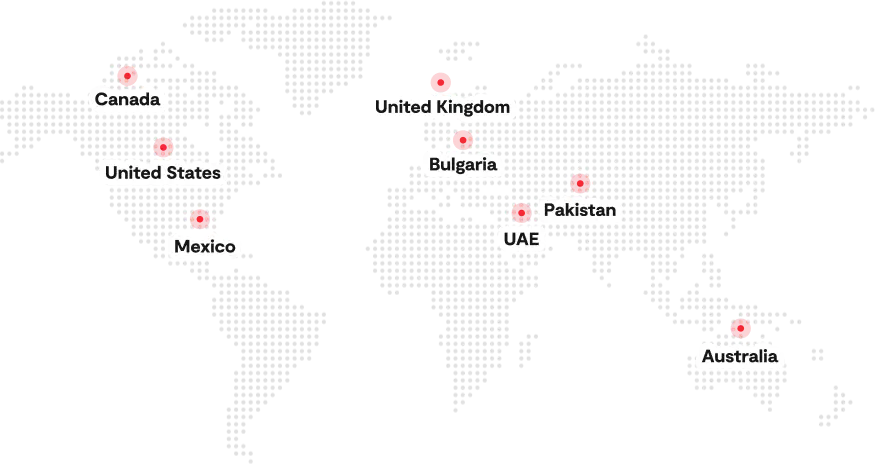Water is becoming a critical pressure point for farms worldwide. From prolonged droughts in southern Europe to declining river flows in the western United States, growers everywhere are forced to do more with less.
These aren’t abstract risks; they’re daily realities that traditional irrigation methods can’t keep up with. Manual monitoring and fixed schedules leave too much room for costly mistakes. Overwatering wastes inputs and drives nutrient runoff, while underwatering hits yields.
At the same time, regulatory demands are ramping up. California’s Sustainable Groundwater Management Act (SGMA) now requires farms to report detailed water usage, and similar policies are being considered in other states. The pressure isn’t just to irrigate efficiently but to prove it with data.
This is where modern irrigation systems play an important role. By responding to real-time field conditions and integrating with soil, weather, and crop data, these systems are helping farmers regain control, cut waste, improve yields, and stay compliant. The stakes are rising.
In this blog, we’ll explore seven ways modern irrigation systems are helping U.S. farms handle the rising pressure of managing water effectively.
Modern Irrigation Methods Farmers Are Using Today
The methods farmers rely on today have been shaped by years of trial and error and adaptation to local conditions. What sets modern irrigation systems apart isn’t just the technology; it’s how well each method aligns with specific soil profiles, crop types, and operational realities.
Below, we break down the most widely used modern irrigation systems and why they perform best under today’s water and regulatory pressures.
1. Drip Irrigation
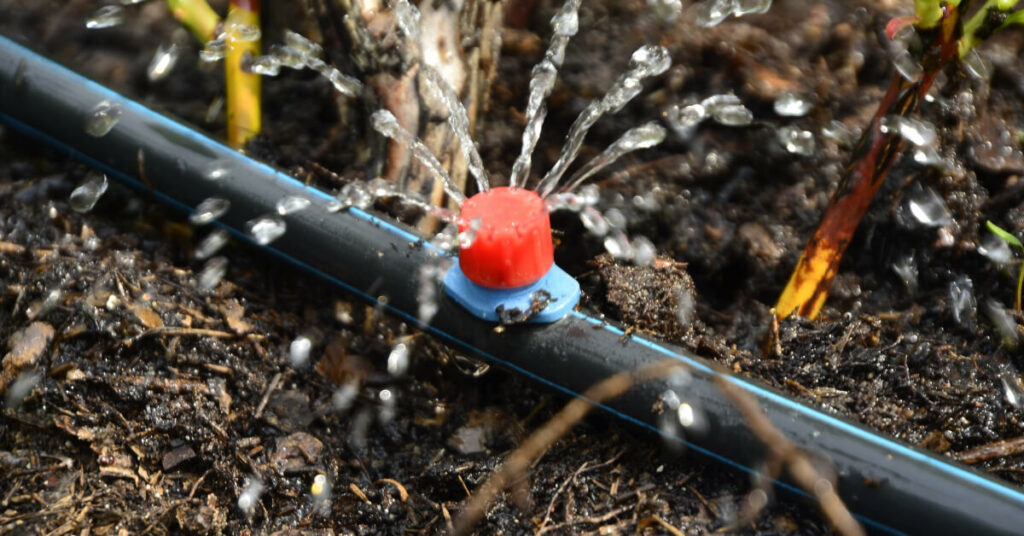
Drip irrigation uses low-pressure emitters to apply water directly to the base of each plant. Its high efficiency (often 90% or more) is due to minimal evaporation and runoff. Modern drip irrigation systems are ideal for water-stressed regions and are widely used in high-value specialty crops such as tomatoes, strawberries, and citrus.
Studies show that drip irrigation can improve yield while reducing fertilizer leaching when used with fertigation. However, filtration and regular maintenance are required to prevent clogging.
Use case: Common in permanent orchards, greenhouses, and vegetable farms, where water restrictions are strict and crop margins justify precision investment.
2. Sprinkler Irrigation
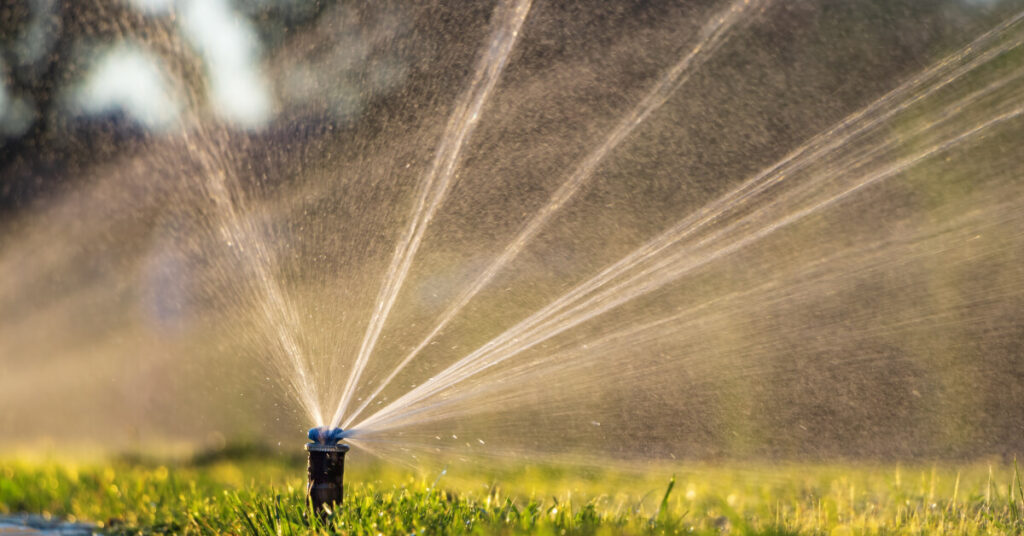
Sprinklers distribute water through pressurized pipes and nozzles, offering more flexibility than surface methods. Center pivots and linear systems are especially popular across the Midwest for crops like corn, wheat, and soybeans.
While sprinkler irrigation’s application efficiency (typically 70–85%) is lower than drip, it can cover large areas with less labor. Evaporation losses are a concern, especially under hot, windy conditions, but recent advances like low-pressure nozzles and drop tubes help improve water use.
Use case: Preferred by broad-acre farms with uniform terrain and access to moderate water supplies, especially in regions with well-developed energy infrastructure.
3. Subsurface Drip Irrigation (SDI)
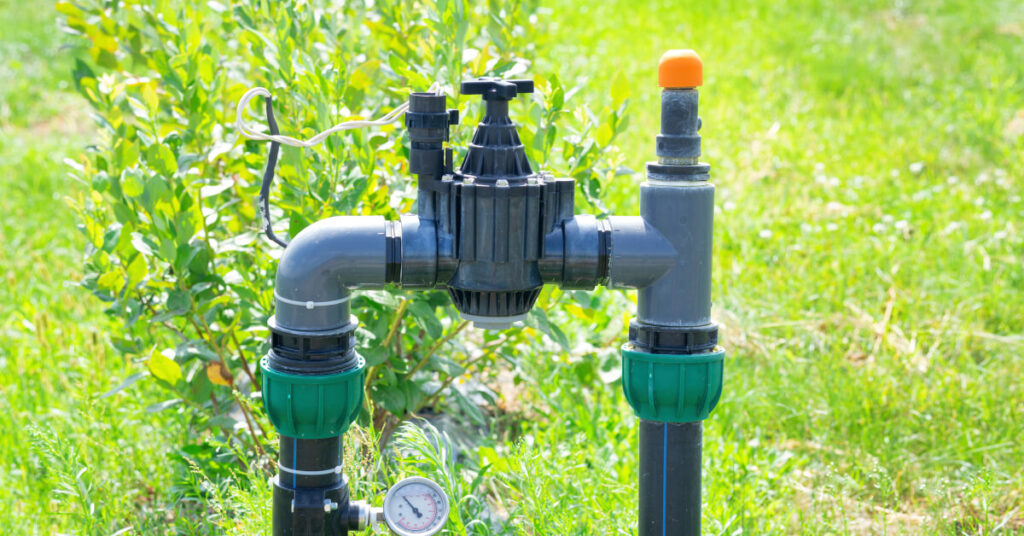
Unlike surface drip, SDI buries drip lines below the root zone, typically 8–16 inches deep. This method eliminates surface evaporation and prevents weed growth, making it highly water-efficient. It suits sandy soils and crops with deep root systems like cotton or alfalfa. While installation is costly, long-term water savings and yield improvements often justify the investment.
Use case: This is common on high-value perennial crops and in sandy or high-evaporation areas, where maximizing root-zone efficiency matters most.
4. Furrow Irrigation with Improved Management
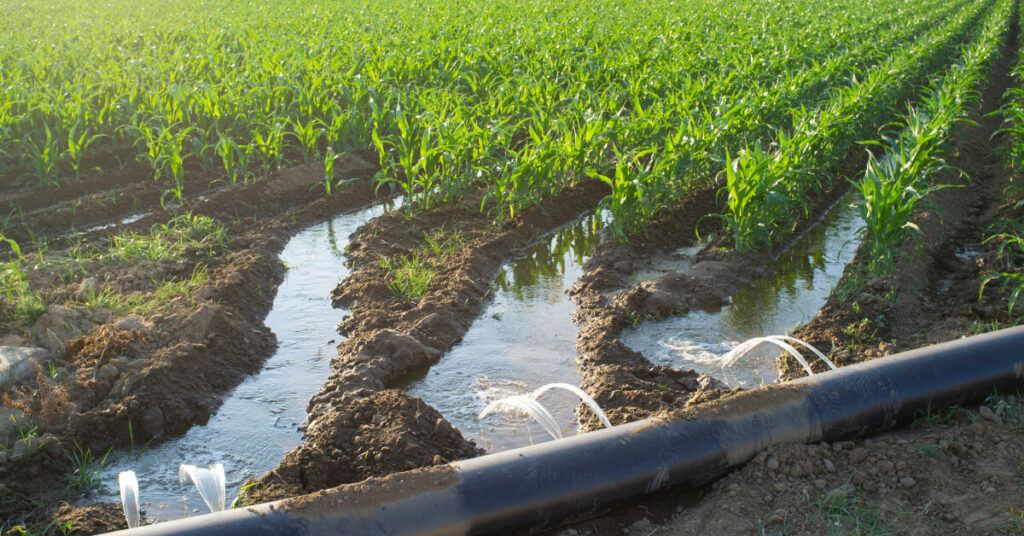
Though often seen as outdated, furrow irrigation is still used on over 20 million acres in the U.S. Its performance can be significantly improved with laser leveling, surge flow valves, and gated pipe systems.
Research shows that furrow systems can achieve over 60% efficiency with proper design, though labor requirements remain higher. This method relies on gravity, making it cost-effective where terrain allows.
Use case: Popular in the Central Valley and Mississippi Delta for crops like cotton, sugar beets, and corn, especially where water costs are low but land is expansive.
5. Smart Irrigation Systems
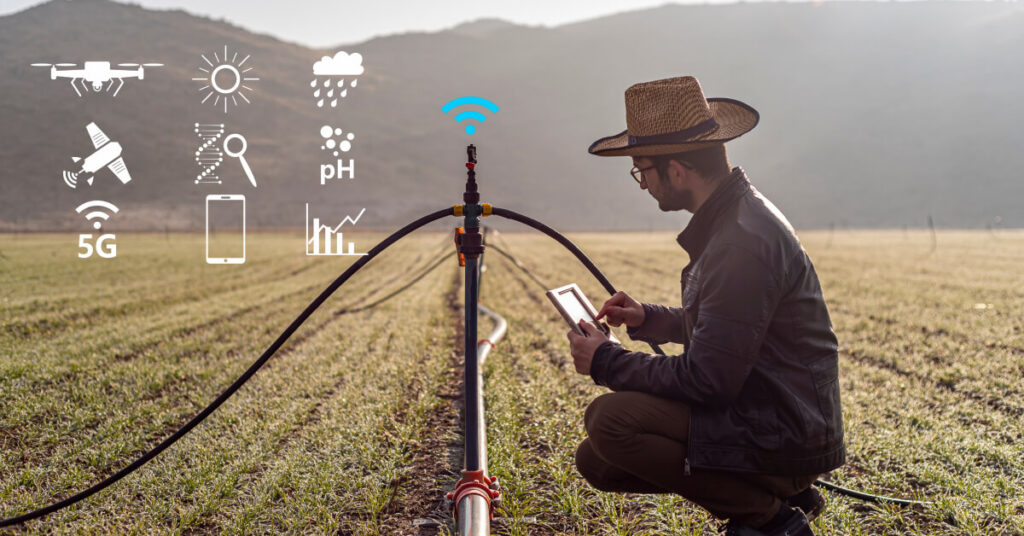
These systems use sensors, automation, and weather data to schedule irrigation based on actual field conditions rather than fixed calendars. By integrating with existing infrastructure, smart irrigation systems optimize application timing and volume.
In trials, smart systems have reduced water use by 20–30% while maintaining or increasing yield. Adoption is growing among operations under SGMA and similar regulatory programs.
Use case: Ideal for farms managing multiple irrigation zones, reporting to water authorities, or seeking to reduce labor without compromising precision.
Top 7 Benefits of Modern Irrigation Systems
Now that we’ve looked at the most widely used modern day irrigation systems, the real question is, what do they deliver? Beyond the hardware, it’s the outcomes that matter, like how much water you save, how consistent your yields stay, and how well you adapt to tighter regulations.
Here are seven key benefits modern irrigation systems bring to farms:
1. Maximized Water Use Efficiency
Modern irrigation systems improve water efficiency by shifting from fixed schedules to responsive application. They use real-time field data, like soil moisture, weather forecasts, and evapotranspiration rates, to apply only the water that’s needed, when it’s needed. This avoids the typical inefficiencies of overwatering and runoff.
Many systems also feature zone-specific control and variable-rate technology, which allows farmers to apply water based on slope, soil type, and crop stage. This results in significantly measurable gains in water use efficiency.
2. Higher and More Consistent Crop Yields
Consistent access to the right amount of water at each growth stage is important in achieving stable yields. Modern irrigation systems help reduce the variability caused by over- or under-watering. This ensures that crops receive uniform moisture across the field, leading to healthier root development, reduced plant stress, and more predictable performance at harvest.
Modern irrigation systems become even more effective when used alongside crop management software. The software helps farmers track when and how much water is applied, monitor soil conditions over time, and spot issues early. This makes it easier to adjust crop irrigation strategies during the season, helping crops grow more evenly and reducing yield losses caused by water stress or timing mistakes.
3. Improved Soil Nutrient Retention
When water moves too fast through the soil, it takes valuable nutrients with it, often before plants can absorb them. Modern irrigation systems help slow that process down by gradually and evenly applying water. This allows nutrients to stay within the active root zone longer, improving uptake efficiency. This control makes a noticeable difference, especially in lighter soils or after fertilization.
Farmers using precision irrigation practices often report better nutrient response without increasing input rates. When water is managed well, nutrients work harder and stay where needed most.
4. Reduced Labor and Time Demands
Modern irrigation systems significantly reduce the manual effort to manage watering across a farm. Instead of opening valves by hand or monitoring schedules manually, farmers can automate irrigation based on timers, sensor data, or remote controls. Larger operations benefit most; where managing multiple zones would otherwise take hours, automation does it in minutes.
Smart agriculture systems also send alerts for leaks, pressure drops, or system failures, reducing the need for constant supervision. This shift frees up labor for more skilled tasks and reduces the margin for error in day-to-day water management.
Pro Tip: Group your fields or irrigation zones by crop type and watering needs in your control system. This allows you to schedule irrigation in batches, reducing manual adjustments.
5. Adaptable to Various Farm Sizes and Conditions
One of the biggest strengths of modern irrigation systems is their flexibility. Whether you’re managing a few acres of vegetables or thousands of acres of row crops, these systems can be scaled to fit. Smaller farms often start with simple drip setups, while larger operations invest in zone-based or smart-controlled systems.
They also adapt to different terrains, flat, sloped, or irregular fields, and work with varying soil types by adjusting flow rates and application methods. This adaptability means farmers don’t need a one-size-fits-all solution. Instead, they can use irrigation to match their exact land, crop, and infrastructure realities, without overcomplicating the setup.
6. Lower Long-Term Operating Costs
Modern irrigation systems may require upfront investment, but they’re built to pay off over time. By delivering only the water crops need, they cut down on excessive pump use, reduce energy bills, and help avoid the hidden costs of overwatering, like soil damage or nutrient loss. For farms relying on diesel or electricity for irrigation, even small efficiency gains translate into noticeable savings across the season.
Pro Tip: Monitor flow rate changes over time. Gradual drops often signal clogging or inefficiencies that quietly drive up energy use without obvious signs in the field. Early detection protects both your yield and your bottom line.
7. Better Control of Weeds and Pests
Modern irrigation systems help limit weed and pest pressure by controlling where and how water is applied. Surface flooding or overwatering creates ideal conditions for weeds and moisture-loving pests to thrive. In contrast, drip and subsurface systems keep the soil surface dry, making it harder for weed seeds to germinate and for pests like fungus gnats or root rot to spread. Precise irrigation also avoids creating waterlogged zones where diseases develop.
Pro Tip: Use crop management software to log pest hotspots and irrigation history together—patterns often reveal how excess moisture invites recurring outbreaks.
How Modern Irrigation Is Better Than Traditional Irrigation Methods
While traditional irrigation methods are still used in many regions, they often lack efficiency, precision, and adaptability. Modern irrigation systems are designed to solve those gaps, reducing waste, saving time, and delivering water exactly where it’s needed.
| Feature | Traditional Irrigation | Modern Irrigation |
| Water use efficiency | Moderate. Can be efficient with good field prep | High. Minimizes evaporation, runoff, and overwatering |
| Uniform water application | Often uneven on sloped or compacted fields | High consistency through pressure and flow control |
| Setup and maintenance cost | Low initial investment, simple to install | High upfront cost; requires tech and maintenance |
| Labor demands | High. Manual monitoring and adjustments | Low. Automation reduces manual work |
| Adaptability to terrain | Best suited for flat, leveled land | Flexible. Can be customized to various field conditions |
| Control and precision | Limited. Relies on fixed timing and flow | High. Real-time control with sensors and IoT data |
| Scalability | Effective for small to mid-sized farms with simple layouts | Highly scalable with modular components |
| Energy consumption | Low for gravity-fed systems; higher with pumps | Depends on the system; it can be optimized with smart controls |
Which Irrigation Method Is Better For You?
Choosing between traditional and modern irrigation methods depends on your farm type and size. Many traditional approaches have a low upfront cost and are easy to install. These methods may still work for flat fields with low-value crops and easy water access. But if you’re managing high-value crops, variable terrain, or tight water regulations, modern irrigation systems offer better control, efficiency, and long-term savings. It’s all about matching the method to your farm’s needs.
How Folio3 AgTech Crop Management Software Enhances Modern Irrigation
We’ve discussed how crop management software can help farmers get more value from modern irrigation methods. Folio3 AgTech’s crop management software supports this by offering farmers the tools to simplify, automate, and optimize irrigation planning at the farm level.
Our software allows you to monitor and manage irrigation schedules based on real-time field data, including soil moisture levels, crop growth stages, and local weather patterns. Whether you’re using drip, sprinkler, or subsurface systems, you can track how much water is being applied in each zone and adjust it as needed. This helps reduce water waste, prevent overwatering, and ensure your crops get exactly what they need, when they need it.
Here are some ways Folio3 AgTech’s crop management software can help modern irrigation systems:
- Remote irrigation scheduling: You can plan and control irrigation tasks from your phone or laptop without needing to be in the field. This saves time and keeps watering consistent.
- Know what your soil needs: The software connects with sensors to show real-time soil moisture levels, so you’re not guessing when or how much to water.
- Targeted watering by zone: Different parts of your field often need different amounts of water. You can set up irrigation by block or zone, based on crop type, soil, or layout.
- Keep irrigation aligned with other tasks: It helps you schedule irrigation around other jobs like spraying or precision fertilization, so nothing overlaps or gets missed.
- Learn from your data: You can track past irrigation activity and field results to improve your decisions over time, watering smarter each season.
Conclusion
Modern irrigation isn’t about having the latest equipment; it’s about making better decisions with your existing resources. As water becomes harder to access, more expensive to pump, and more regulated to report, farms that treat irrigation as a strategic input, not just a routine, see the difference in yield and cost.
What works best varies from farm to farm. But the advantage comes from control and knowing exactly how much water your fields need, where it’s going, and how it impacts your crop. That’s where modern irrigation systems and crop management software can shift irrigation from guesswork to insight-driven action.
FAQs
What Is The Most Modern Irrigation System?
Smart irrigation systems are considered the most modern. They combine sensor data, weather inputs, and automation to adjust water delivery in real time, improving efficiency, reducing waste, and integrating seamlessly with farm management platforms.
What Is The Most Effective Irrigation System?
Drip irrigation is widely regarded as the most effective for water use efficiency. It delivers water directly to the root zone, especially valuable in high-value crops and drought-prone areas.
What Is A Major Downside To Drip Irrigation?
A key downside is maintenance. Drip systems are prone to clogging and require filtration, monitoring, and periodic cleaning to maintain performance, mainly in sediment-heavy water or inconsistent pressure areas.
What’s The ROI of Using Crop Management Software With Modern Irrigation Systems?
Farms using crop management software with modern irrigation often see ROI through reduced water use, labor savings, improved yields, and better input timing. For many, these benefits become measurable within the first few growing seasons.
How Do Early Drip Irrigation Systems Compare to Modern Drip Irrigation Systems?
Early drip irrigation systems relied on basic tubing and manual flow control, often resulting in uneven water distribution. Modern drip irrigation systems use pressure regulation, filtration, and automation to deliver water more precisely, efficiently, and with much less maintenance.

